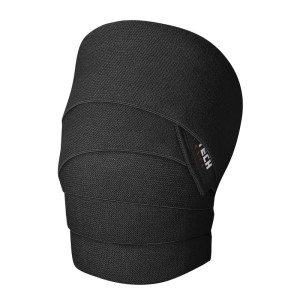Strength Training For Dummies

Working on your cardio is one way to stay healthy, however, a fitness routine, which focuses on weight loss, toning, and building muscle, also requires strength training.
While cardio will help keep your fitness levels up and burn those calories, the benefits of strength training are plentiful.
A common belief (especially amongst women) is that strength training may lead to ‘bulking’, but in fact, it aids in weight loss. Strength training helps build lean muscles, which burn more calories when you are resting. In the quest for weight loss or maintenance, weight training becomes crucial.
The added benefits of strength training also include stronger joints and bones, injury prevention and muscle endurance for those longer cardio sessions.
1. Don’t underestimate the benefits of your body weight.
While it may be both tempting and intimidating to start with machines and heavy weights, you can start by using your body weight. There are numerous ways to create resistance without relying on added equipment.
Bodyweight workouts can be an effective way to strength train, without over complicating your routine. Think squats, push-ups, planking, jumping jacks... anything that challenges your muscles and builds resistance.
2. Slowly introduce equipment.
As you become more comfortable and build your strength up you can introduce equipment such as dumbbells, kettlebells, slider disks, resistance bands and medicine balls to add more resistance to your routine.
3. Build up your routine slowly.
You may have had your first weights training session and be ready to commit to five days a week, however, realistically, the chances of sticking to an intense routine straight away are minimal.
4. Avoid shocking your body.
Start with two sessions a week and work your way up.
You should also watch the session times. Ideally, you should begin with 20-minute sessions and work your way up to an hour-long workout.
5. Prepare your muscles.
When we say prepare your muscles we really mean prepare your muscles. Introduce foam rolling into your warm-up routine to ensure your muscles are loosened up and activated.
While stretching can achieve a good warm-up, foam rolling will increase your range of movement, which will, in turn, maximise your workout. This will also decrease your risk of injury.
6. Pair upper and lower body movements.
While you have heard the terms ‘leg day' or 'chest day' floating around, a beginner should combine exercises targeting different parts of the body each session.
A good place to begin is completing 15 repetitions (or reps) of an upper body exercise (for example push ups) followed by 15 repetitions of a lower body exercise (for example jumping jacks). Take a 1-2 minute break and then repeat the exercises two more times.
7. Choose your weights wisely.
Like with cardio, your weights should be something you work on gradually. Trying to keep up with the person next to you could lead to injury.
The weights you choose will depend on the exercise, but a good starting point would be a weight that challenges you but does not impair your form. If you find that you can’t extend your movements fully, then the weight is too heavy. However if you breeze through your 15 reps, then the weight is too light.
8. Refuel.
While fuelling up is important when it comes to any form of exercise, it is especially important when it comes to lifting weights, especially if the end game is to increase your muscle mass. This means watching your water, protein and carbohydrates intake.
9. Rest and listen to your body.
Being a little sore comes with the territory. DOMS (Delayed Onset Muscle Soreness) is responsible for those normal aches that come the day after exercising. This is because as you train you are causing microscopic damage to your muscle tissue which repairs naturally. This is the process of how you build muscle. This process makes rest days extremely important as without them your muscles aren’t able to repair properly.






